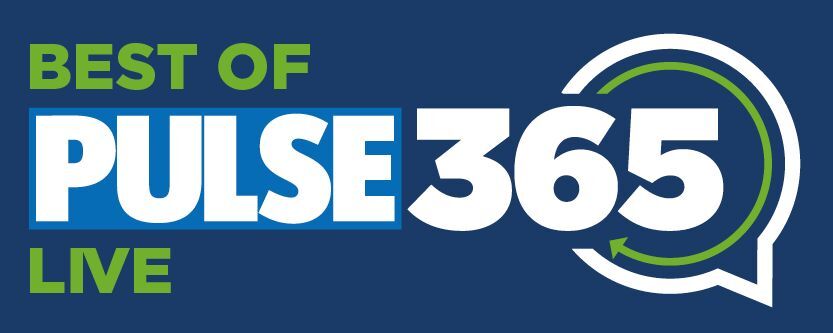
In the latest in our series from Pulse Live talks, GP and safeguarding consultant Dr Vimal Tiwari explains how practices can use good organisation to ensure they meet their legal responsibilities to protect the wellbeing of their child patients
Introduction
All NHS providers have a legal responsibility to protect their patients’ health, wellbeing and human rights; enabling them to live free from harm, abuse and neglect. Patients must be protected while using healthcare services, but staff also have a duty to recognise patients who are being maltreated or at risk of abuse in other settings.
Around one third of children in the UK are thought to be vulnerable for some reason. But all children are vulnerable in that they are dependent on adults to care for and protect them. Recent high-profile cases demonstrate how threats can come from adults within the family – or even from healthcare professionals. So how can practices ensure the safeguarding of children using their service?
Practice organisation
Efficient practice organisation is fundamental to good general practice and to embedding safeguarding and safe care within the practice. Practices need a lead safeguarding GP, deputy lead and administrative lead.
The safeguarding team shares wide-ranging responsibilities, outlined throughout this article. They must monitor national and local legal, regulatory and registration requirements to ensure the practice meets all statutory, contractual and regulated duties.
Every practice needs a simple, functional safeguarding policy with protocols that are succinct and comprehensible to all members of staff. They need to be quickly located in an emergency, regularly updated and reviewed for effectiveness. All staff members should know what to do if worried about a child and how to make a safeguarding referral, even if they may not be required to do so.
Recruitment and staff training
The safeguarding team needs to ensure the practice has safe staff recruitment and selection processes. This will include taking up references and background checks, checking identifications, certifications, licences, registrations and qualifications, appropriate use of disclosure and barring checks1 and a supervised probationary period to ensure new staff comply with safe practice procedures.
Induction and training should be applicable to the individual’s role in the practice and must include safeguarding training, aligned to recommendations in Safeguarding children and young people: roles and competences for health care staff2. Many surgeries encourage online training, which must be reinforced by in-house training to support staff in converting theory into practice.
GP Safeguarding Training Requirements are under review, but the current RCGP recommendation is for 12 hours over 3 years for all GPs, while practice lead safeguarding GPs are expected to do another 4 hours, so 16 in total over 3 years. The recommendation is for blended learning so it could include private study, in-house training, documentation and reflection on sudden unexpected incidents, learning from safeguarding referrals and outcomes, reflection on attendance at case conferences, participation in safeguarding reviews and attendance at formal teaching or lectures. It is important to consider how any learning has altered practice and to record this in your appraisal document.
The safeguarding team should also participate in recruitment and training of chaperones.
Referrals and reports
General practices have a statutory duty to raise concerns, share information and work with other services and agencies to contribute to the ‘early help’, ‘child protection’ and ‘child in need’ processes (RCGP/NSPCC). This includes making referrals if worried about a child and responding to requests for reports. Many areas have now incorporated pre-populated templates for child protection reports within GP electronic recording systems.
Child protection referrals and reports
- Familiarise yourself with referral requirements and processes in your locality. Every Local Authority has a threshold document setting out criteria for referrals. Usually parental consent is required for referrals unless to seek consent would increase risk to the child (or anyone else including yourself) in which case state clearly any reasons why consent has not been sought.
- Requests for reports for Section 17 and Section 47 enquiries should be accompanied by signed consent from the parents. If consent has been withheld, this should be made explicit in the request. For Section 47 reports, General Medical Council advice is: “Ask for consent to share information unless there is a compelling reason for not doing so. Information can be shared without consent if it is justified in the public interest or required by law. Do not delay disclosing information to obtain consent if that might put children or young people at risk of significant harm.”
- These are statutory reports so we are legally obliged to do them. In some areas payment for completion may be available.
- Children who are defined as being in need (section 17 of the Children Act 1989) are: children who are unlikely to achieve or maintain, or to have the opportunity of achieving or maintaining, a reasonable standard of health or development without the provision of services by a local authority; children whose health or development is likely to be significantly impaired, or further impaired, without the provision of such services; or children who are disabled. This section may be used for example to help families with parental difficulties caused by mental or physical ill health.
- Significant harm Section 47 (Child Protection): Consideration of the severity of ill treatment may include the degree and the extent of physical harm, the duration and frequency of abuse and neglect, the extent of premeditation, and the presence or degree of threat, coercion, sadism and bizarre or unusual elements.
- There is usually a short time frame for completion of these reports of 24 to 72 hours depending on level of urgency.
- Important information to include: concerns about child development, immunisation status, past and present medical history including neurodevelopmental and mental health disorders, prescribed medication and compliance, missed scheduled appointments and increased unscheduled attendances, parental mental and physical health and any history of domestic abuse.
- Information shared must be objective, relevant and proportionate. However, if you have observed that the child is always dirty, unkempt, unhappy, or inappropriately dressed for the season do not be afraid to say so.
- Do not send the complete medical record as this may be a breach of GDPR. The GMC considers it good practice to share with the patient any information shared with other agencies, with or without consent.
- Reports for Case Conference: usually the same content as the Section 47 report unless there has been a significant development or change since the S47 report was sent, for example deterioration in child or parental mental or physical health or new injury.
External liaison
The safeguarding team should arrange regular multi-disciplinary meetings with staff from other agencies such as public health (health visitors and school nurses), community paediatric services and social services. They are responsible for developing and maintaining contact with the local health safeguarding team, which will include a designated doctor, named GPs and specialist safeguarding nurses.
The team should ensure requests for child protection reports – such as reports for statutory investigations, reports for case conferences, and invitations for attendances at case conferences – receive a timely and effective response. In addition, they are responsible for the implementation and review of action plans following case conference reports.
Safeguarding teams should participate in statutory child protection reviews and audits conducted by the local Safeguarding Children’s Partnership (or similar organisation depending on jurisdiction). They may also be required to support staff participating in child death reviews, which can be onerous and emotionally draining.
Within the practice
The safeguarding team must support reporting and complaints procedures, including safe ‘whistleblowing’, and should be able to advise practice team members if they have concerns.
They are responsible for ensuring that practice members receive adequate assistance when dealing with child protection matters. This may include supporting GP colleagues with making Child in Need and Child Protection referrals and managing children who have disclosed sexual abuse.
The team should be leading on in-house analysis and learning from significant events and critical incidents, and should ensure national and local recommendations from statutory child protection case reviews, child death reviews and coroners’ reports are implemented.
The role will include liaising with the practice Caldicott guardian to ensure relevant codes are in use, patient summaries are up to date and communications sent to the practice are triaged, coded, actioned, and filed appropriately. Staff training and introduction of safe recording processes to facilitate patient access to records also falls under this remit.
Time and resources
Most importantly, the safeguarding team must have protected time and resources for appropriate professional development and the delivery of their duties. The safeguarding lead is there to support colleagues, not to take on the entire practice responsibility safeguarding or to de-skill other clinicians. Safeguarding is everybody’s business.
This list of tasks is for guidance only and is not comprehensive. Practices with limited resources might consider incorporating this role with that of Child Health or Adult Safeguarding Lead because some of these tasks may be generalisable to Adult Safeguarding.
Things to remember
- Where to find help: Staff need clear guidance on what to do with any child protection concerns, who to contact if worried, where to seek advice, where practice policies and procedures are stored, who to turn to if troubled by the behaviour of another member of staff. Practice procedures should contain contact telephone numbers for the local safeguarding teams and links to local processes.
- Coding: NHSE have issued a list of safeguarding codes, which is limited but should be used until something better emerges. All safeguarding contacts should be coded, eg requests for Section 17. Section 47 reports and reports for Case Conferences, domestic abuse notifications, children placed on Child in Need and Child Protection Plans.
- Staff training requirements are set out in Intercollegiate guidance, currently under revision.
- Many practices use online learning for staff training. The gives the basic principles and legal framework for child protection, but it is important to support this with in-house training to enable staff to convert theory into practice. How is it relevant to their work? How does it improve practice effectiveness, efficiency and patient safety?
References
- UK Government. Disclosure and Barring Service information about services. Link
- Royal College of Paediatrics and Child Health. Safeguarding children and young people – roles and competencies. Link

Pulse 365 LIVE Events cover a broad array of topics pertinent to you, your patients, and your practice. You will gain free CPD and be able to take part in live Q&As. Specifically created for all practising, GMC-registered GPs and trainees, you will hear from experts across primary and secondary care, and network with like-minded GPs. Sign up for your nearest event today.
Pulse October survey
Take our July 2025 survey to potentially win £1.000 worth of tokens













“These are statutory reports so we are legally obliged to do them.”
No, that is incorrect. GP surgeries are not legally obliged to disclose under s17 or under s47 of the Children Act 1989.
“The obligation under section 47(9) of the 1989 Act applies only to the persons and public authorities listed in section 47(11)” : BMA v Northamptonshire County Council & others CO/3419/2019 at [35]
GP surgeries are not one of the “persons” listed under s47(11) of the Children Act 1989.
Legal obligation cannot, therefore, be the lawful basis under common law, for GP surgeries, for such disclosures.
But we all have a → professional and ethical ← duty to assist the requestor, or disclose information, when justified.
Assuming, of course, explicit permission has been sought, obtained, and provided to the surgery for a s17 request.
We are, of course, under a → professional and ethical ← duty to assist childrens services with their enquiries, assuming they have provided us with the necessary explicit perrmission (for s17 requests).